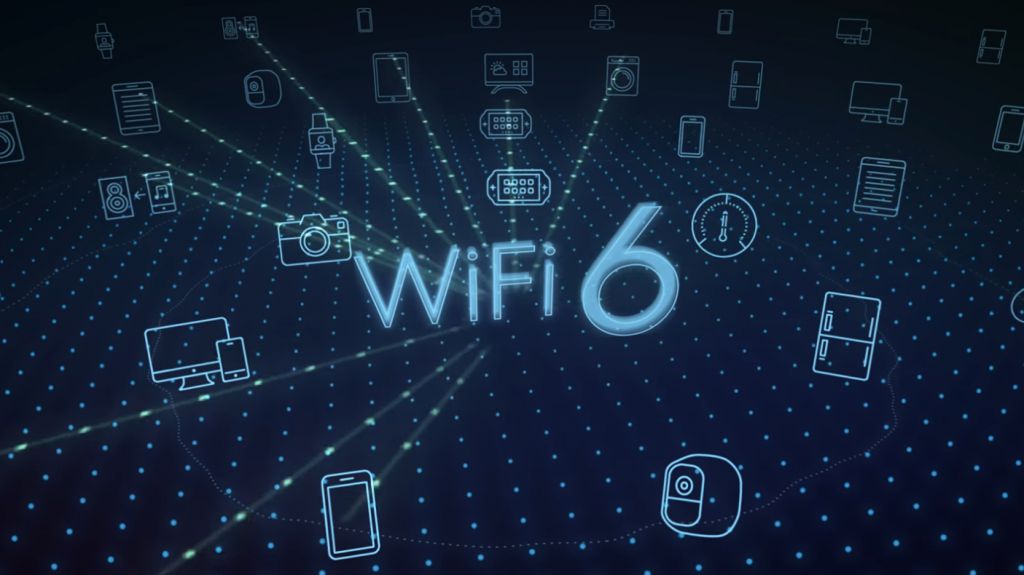The WiFi Alliance has announced that its WiFi 6 certification program is now live, effectively amounting to the official launch of the next-generation 802.11ax wireless standard.
In a press release, the non-profit organization confirmed that companies will now be able to promote compliant wares – including smartphones, laptops, routers, smart speakers and home security cameras – using the WiFi Certified 6 label.
Mostly, these are expected to be new devices rolling out in the coming months as the best wireless routers receive their next major update.
However, a handful of products are already equipped to support the new wireless standard, including handsets like the the iPhone 11 and iPhone 11 Pro
What is WiFi 6?
WiFi 6 is the commercial name given to the the new 802.11ax wireless standard by the WiFi Alliance, a wireless industry consortium comprised of over 550 member companies.
Why the different monikers? Last year, the WiFi Alliance introduced a new, simplified WiFi naming system that denotes each progressive generation of the radio technology with a single number, e.g. WiFi 6.
This took over from the more complicated 802.11-based naming system, which was deemed confusing for consumers. We think you'll agree, it was a good move.
Naming aside, WiFi 6 supplants WiFi 5 (or 802.11ac, if you must) at the top of the wireless food chain and is a major upgrade designed to improve speeds on crowded networks.
By way of illustrating the importance of the update, WiFi 5 was first introduced in 2013 and WiFi 7 roll out isn't expected until 2024, so these releases aren't everyday occurrences.
Or, as the WiFi Alliance puts it: “WiFi Certified 6 supports a more diverse set of devices and applications, from those requiring peak performance in demanding enterprise environments to those requiring low power and low latency in smart homes or industrial IoT scenarios. "
WiFi 6 speed: What's new about 802.11ax?
The improvements start with a headline grabbing raw speed bump: WiFi 6 can technically achieve download speeds of nearly 10Gbps, compared to WiFi 5's 3.5Gbps maximum.
However, these numbers are irrelevant to most of us due to network limitations. The maximum advertised speed for Comcast's Xfinity WiFi is 1GB, for example, so you're unlikely to be getting a 10Gbps downlink at home any time soon.
What is relevant are the new technologies that underpin WiFi 6, which are designed to help networks handle data delivery more efficiently and give you access to faster, more consistent download and upload speeds – especially on busy networks.
In theory, this means you could soon be enjoying 8K video streaming and downloading with the right equipment – even if such content isn't available yet to most people.
In addition to being faster, WIFi 6 is also being touted as considerably more secure. It features a new security standard, WPA3-Personal, which could see WiFi users able to roll back the years and use simpler passwords than those currently required by many services.
According to the WiFi Alliance, this is because WPA3 technology is “resistant to offline dictionary attacks where an adversary attempts to determine a network password by trying possible passwords without further network interaction.”
Few of us are likely to mourn the loss of the '!' at the end of every password, so this is another very welcome development.
Taken alongside the ongoing rollout of 5G, wireless connectivity looks set for a watershed year in 2020.
Wireless router reviews:
- Best overall: Linksys WRT1900AC review
- Best value: Linksys E1200 review
- Best setup: TRENDnet TEW-812DRU review
- Best for Apple ecosystems: Apple AirPort Extreme review
- Best parental controls: ASUS RT-AC66U review

